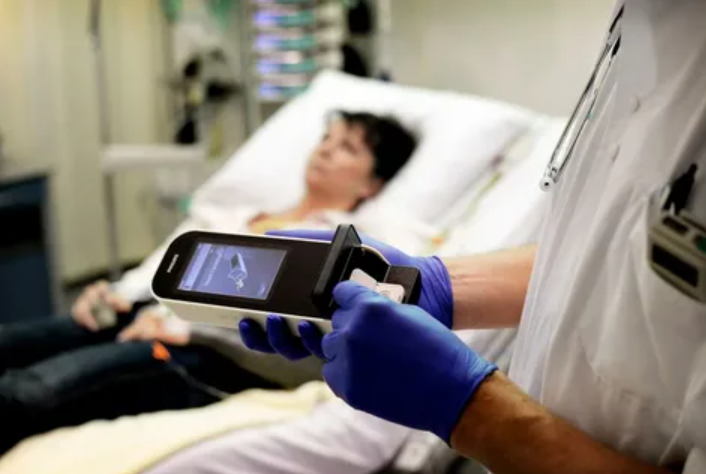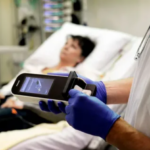Point of care diagnostics (POCD) have witnessed tremendous advancements in the recent few years. Medical devices like POCD are used to get an immediate result in the medical diagnostic testing of various diseases, such as cardiac diseases, cancer, diabetes, and more on. Continuous developments in microfluidic, biosensors, lab-on-a-chip technologies, assay formats, bioanalytical platforms, and complementary technologies have enhanced point of care diagnostics, thereby has improved health monitoring to a huge extent.
Presently, the trend in POCD is inclined sharply towards smart devices along with mobile healthcare. A wide array of mobile healthcare technologies has already been developed, among which, one of the most promising technologies is the cellphone based POC. MFine, India’s largest digital health platform, has integrated Blood Pressure and Glucose Monitoring into a smartphone. In order to offer a range of self-check health products and to remove the requirement for any external device for measurement of health vitals.
According to a report published by Allied Market Research, the global point of care diagnostics market size is anticipated to reach $55.2 billion with a considerable CAGR from 2021 to 2030. North America is currently dominating the market with the largest market share. This is attributed to factors such as rise in the prevalence of chronic & infectious diseases and numerous product innovations by the key market players. The Asia-Pacific region, at the same time, is expected to grow at the fastest pace, owing to growth of healthcare infrastructure, rise in R&D activities, and focus of key market players in emerging economies like India, China, and others.
In addition, the outbreak of the COVID-19 pandemic led to boost the demand for point to care diagnostics even more, thereby led to have a positive impact on the growth of the market. Various point to care diagnostics kits, especially the COVID-19 rapid kits, played an important role in detection of coronavirus. Rise in number of COVID-19 patients increased the demand for point to care diagnostics kits to a great extent.
With this drift on board, several companies are adopting strategies like new product development, partnerships, and collaborations in order to stay competitive in the market. For instance, Baxter International Inc. in collaboration with Digital Diagnostics aims to provide Digital Diagnostics’ industry leading autonomous AI software which is integrated with the Welch Allyn 700 Imager as a diagnostic service.
Meanwhile, another company named Soraya has developed a point to care testing that is based on fastened electrode impedance spectroscopy biosensor. This is beneficial for the quantitative detection of hemoglobin in low resource settings. Here, it is worth mentioning that with such contributions of the key market players, the global point to care diagnostics market is surely going to gather lucrative opportunities for the growth of the market in the years to come.

